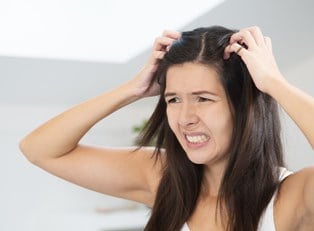In everyday situations, the terms dandruff and dry scalp are normally used interchangeably. However, there are some key differences between these two very different conditions. At the same time, it’s important to remember that they also have some key similarities. Here is a look at what these two conditions share in common as well as what makes them unique from one another.
Similarities
While they are distinct conditions, dandruff and dry scalp produce similar symptoms that make them nearly indistinguishable for people who don’t realize there is a difference. Both dandruff and dry scalp are likely to cause mild to moderate itching and flaking. However, as you’ll see, the types of flakes produced by these conditions are quite different from one another. Additionally, both dandruff and dry scalp are problems that people are generally predisposed to—meaning things like environmental factors play a much smaller role in the problem than genetics.
Differences
The differences between dry scalp and dandruff begin at their origins. Dandruff is caused primarily by two factors—an overproduction of oil by hair follicles or an overabundance of a particular microorganism known as malassezia, which lives naturally on human scalps. On the other hand, flakes caused by dry scalp are the result of dead skin cells drying up and becoming loose.
Additionally, there are differences in treatment for dandruff and dry scalp. Fighting dandruff requires specialized products—most commonly shampoo—that contain ingredients specifically designed to help control the condition. There are numerous over-the-counter brands that will be able to successfully treat dandruff, but in severe cases, prescription products may be necessary. In contrast, treating dry scalp involves providing more moisture to the scalp. Moisturizing shampoos and creams can address the problem topically, but staying hydrated by drinking enough water is a good way to fight dry scalp internally.
Finally, it’s possible to distinguish between dandruff and dry scalp by examining the types of flakes they cause. Dry scalp flakes tend to be small, dry, and white, while dandruff flakes are larger, more yellow in color, and typically feel oily or greasy.



